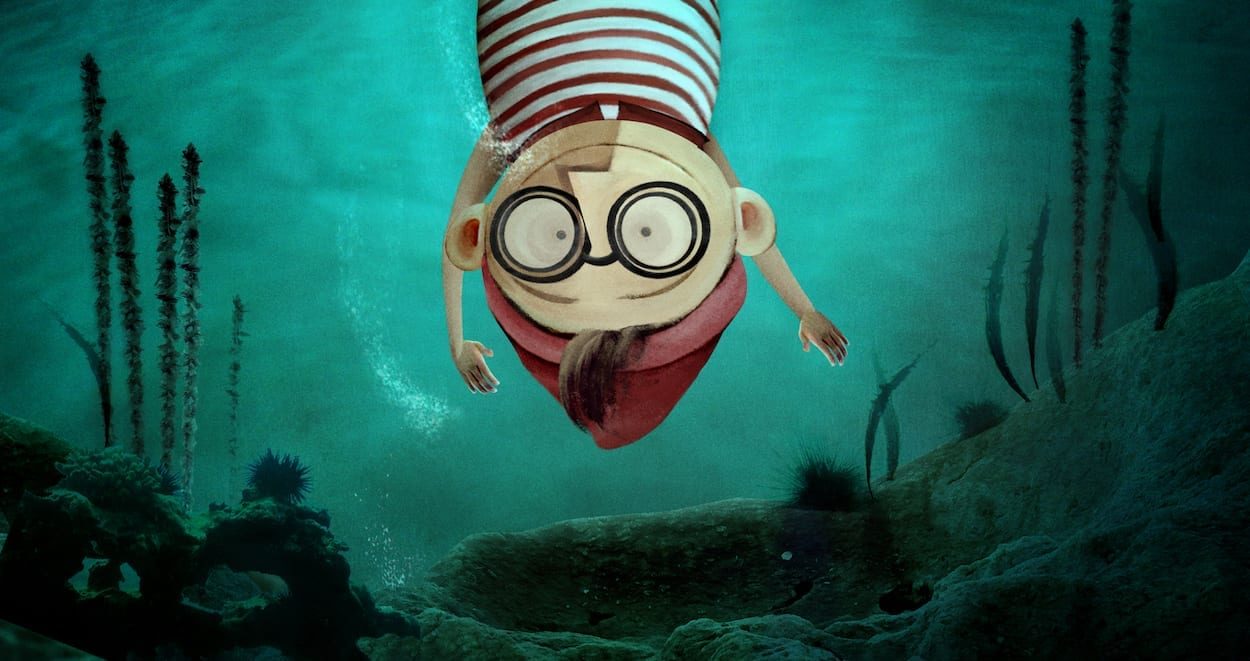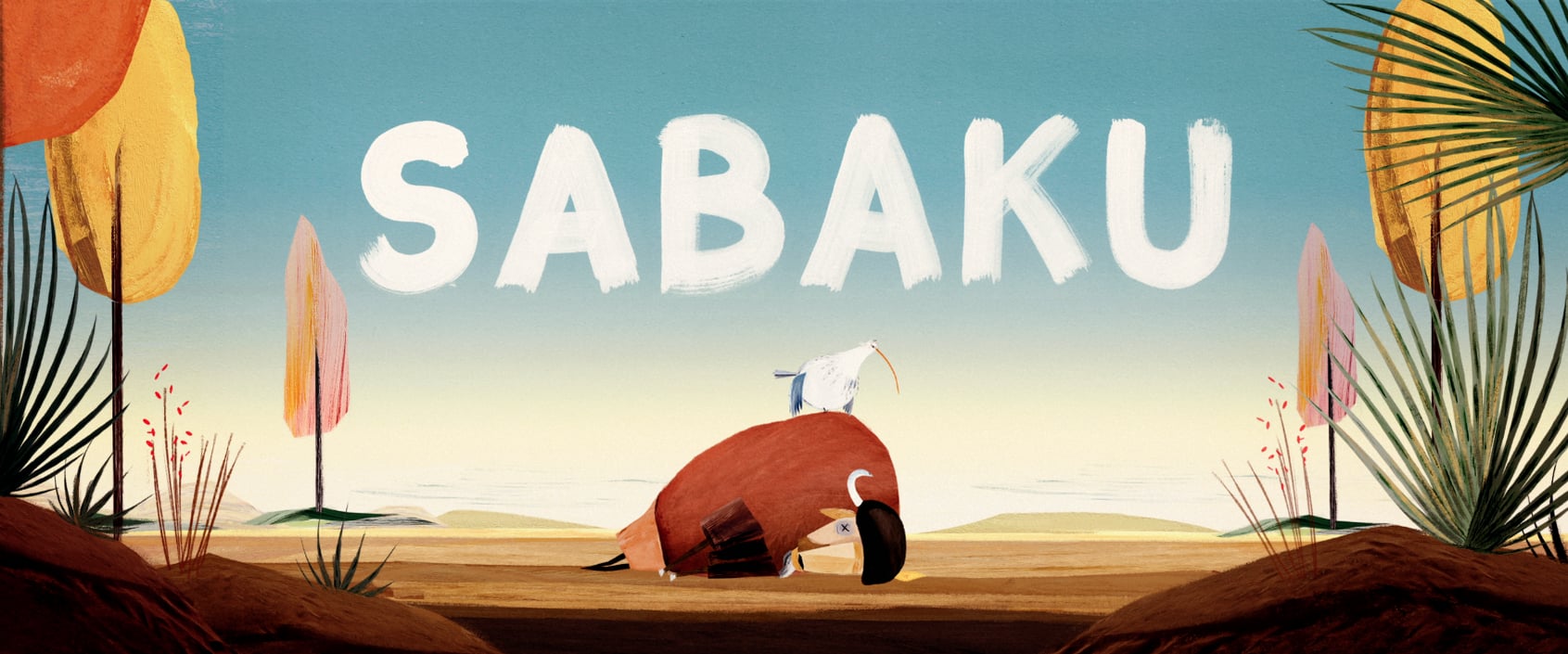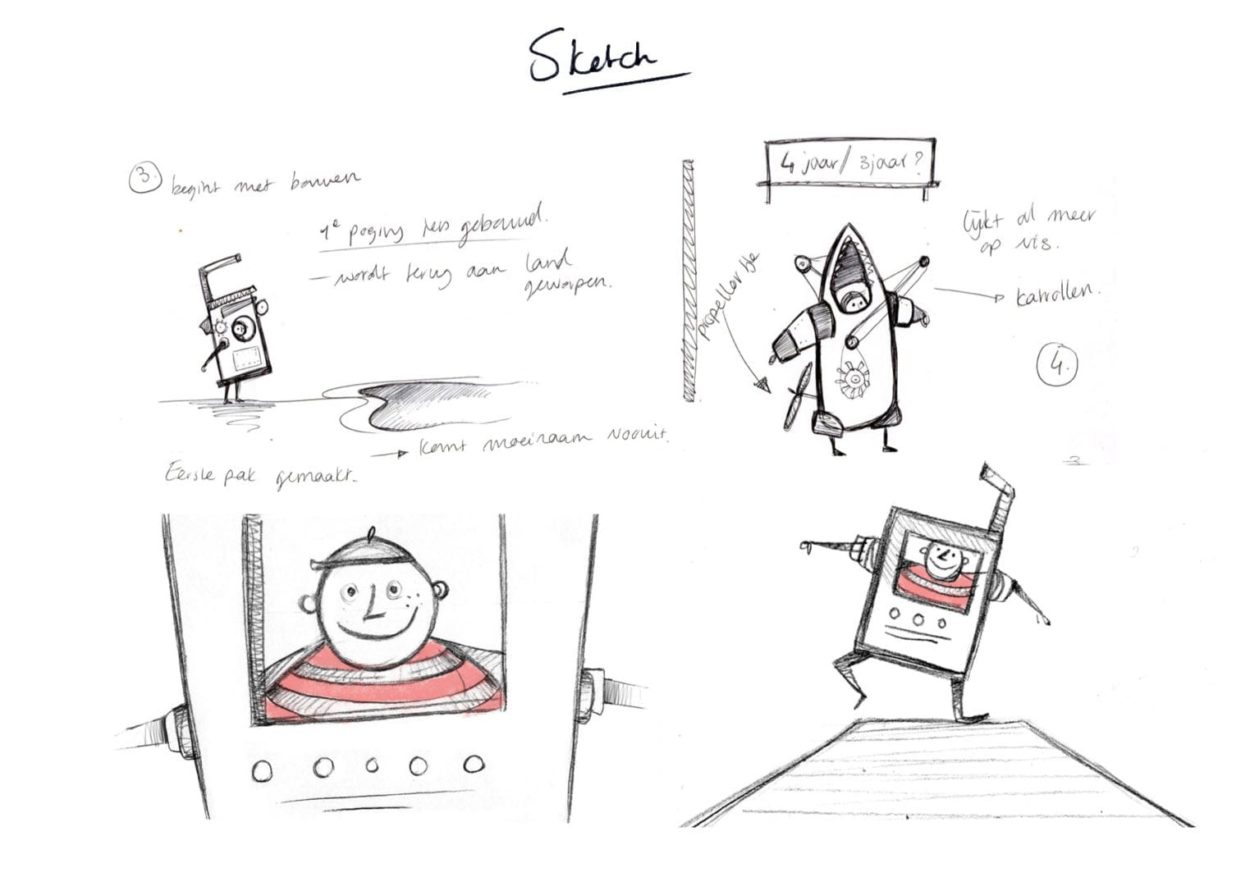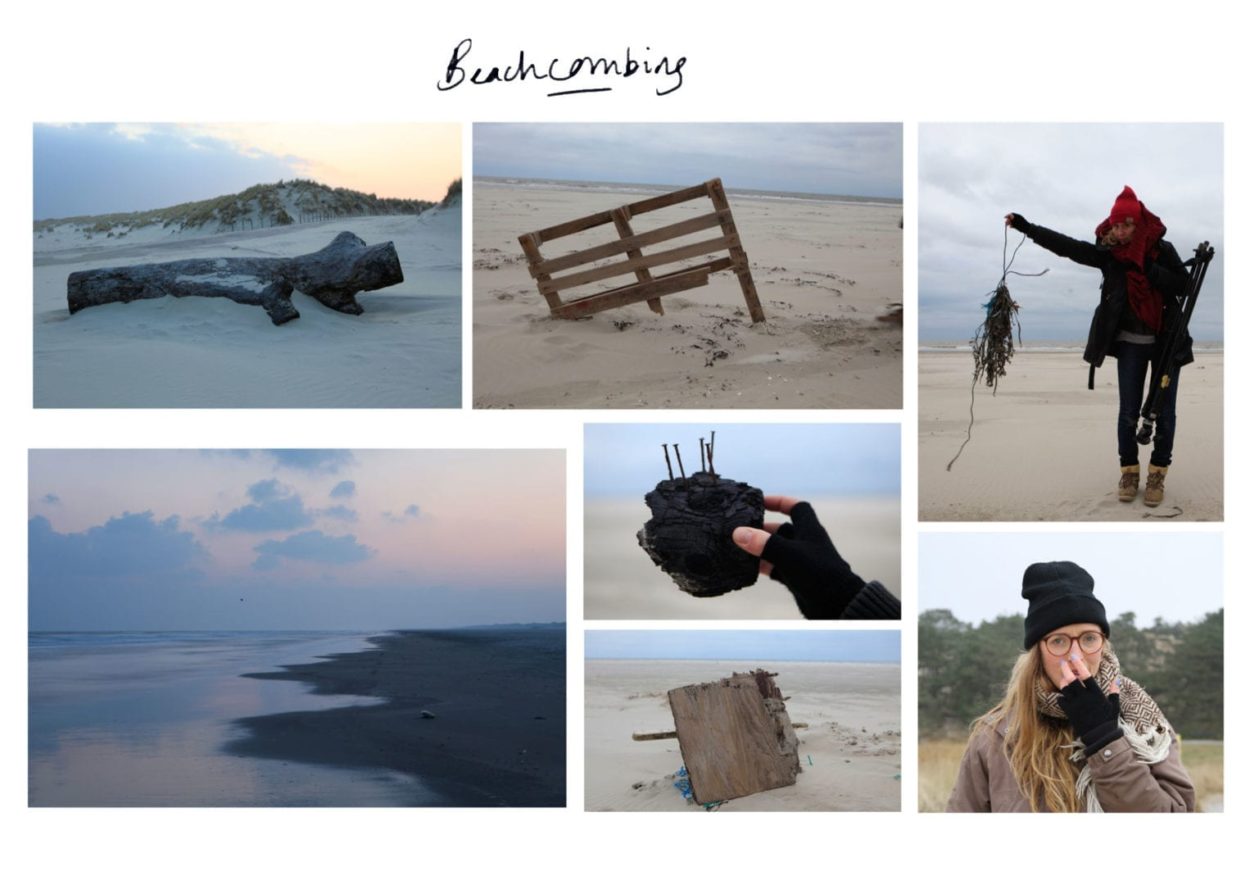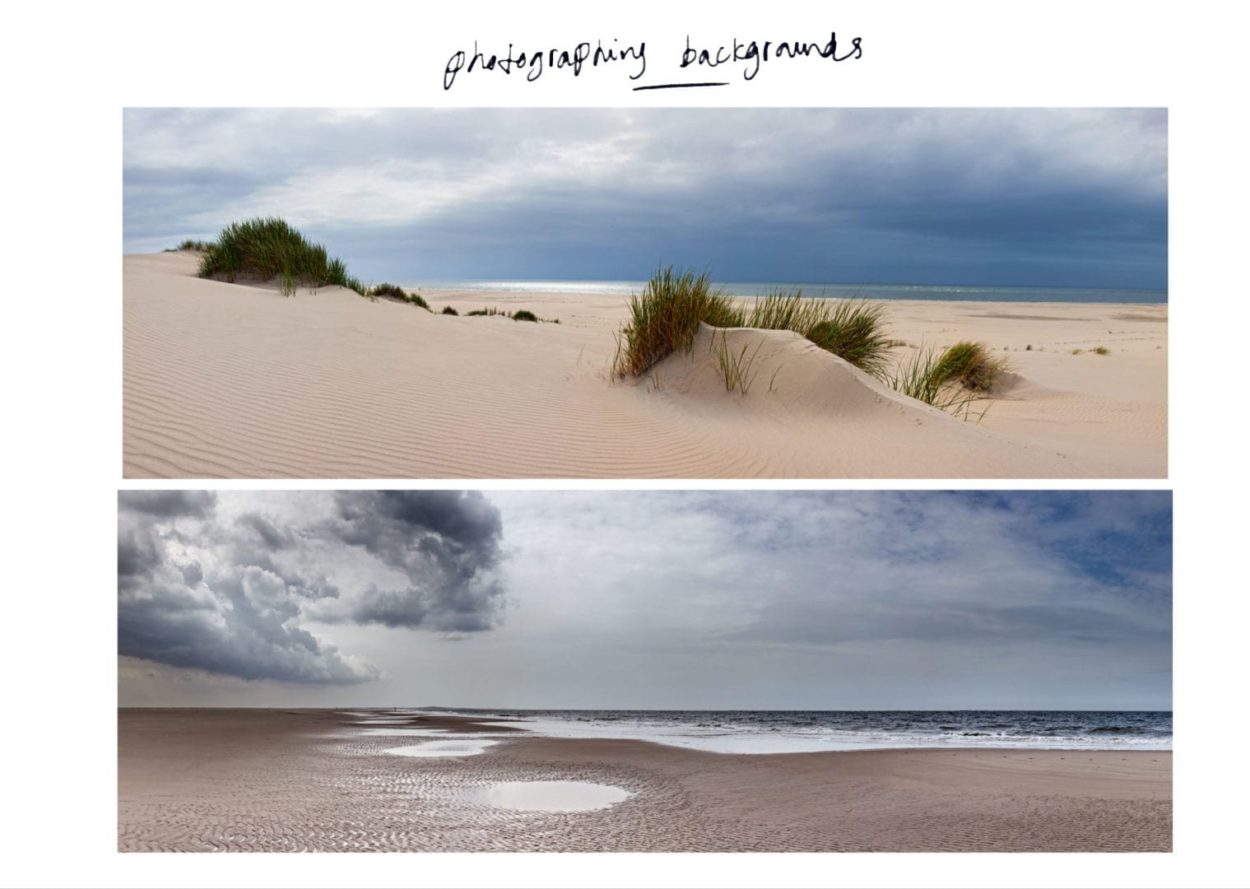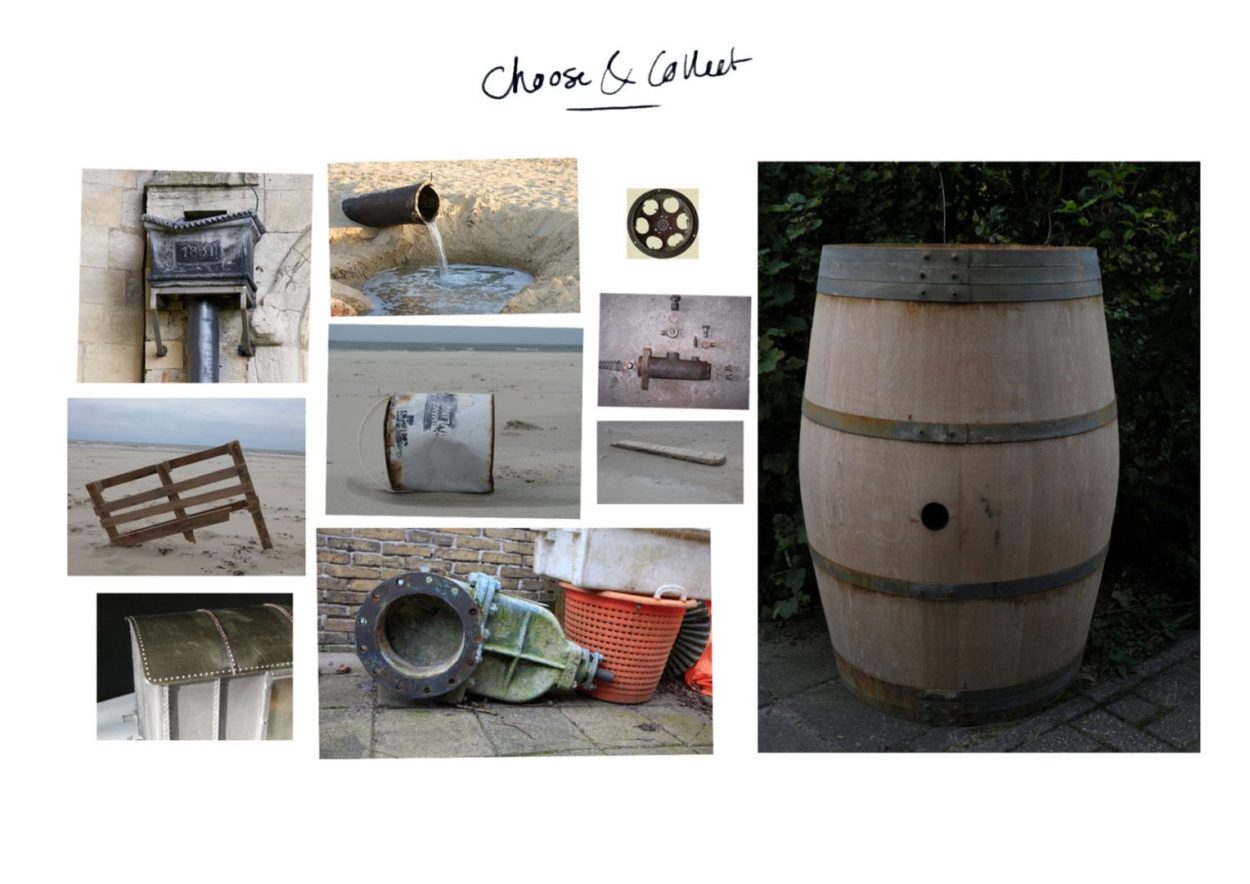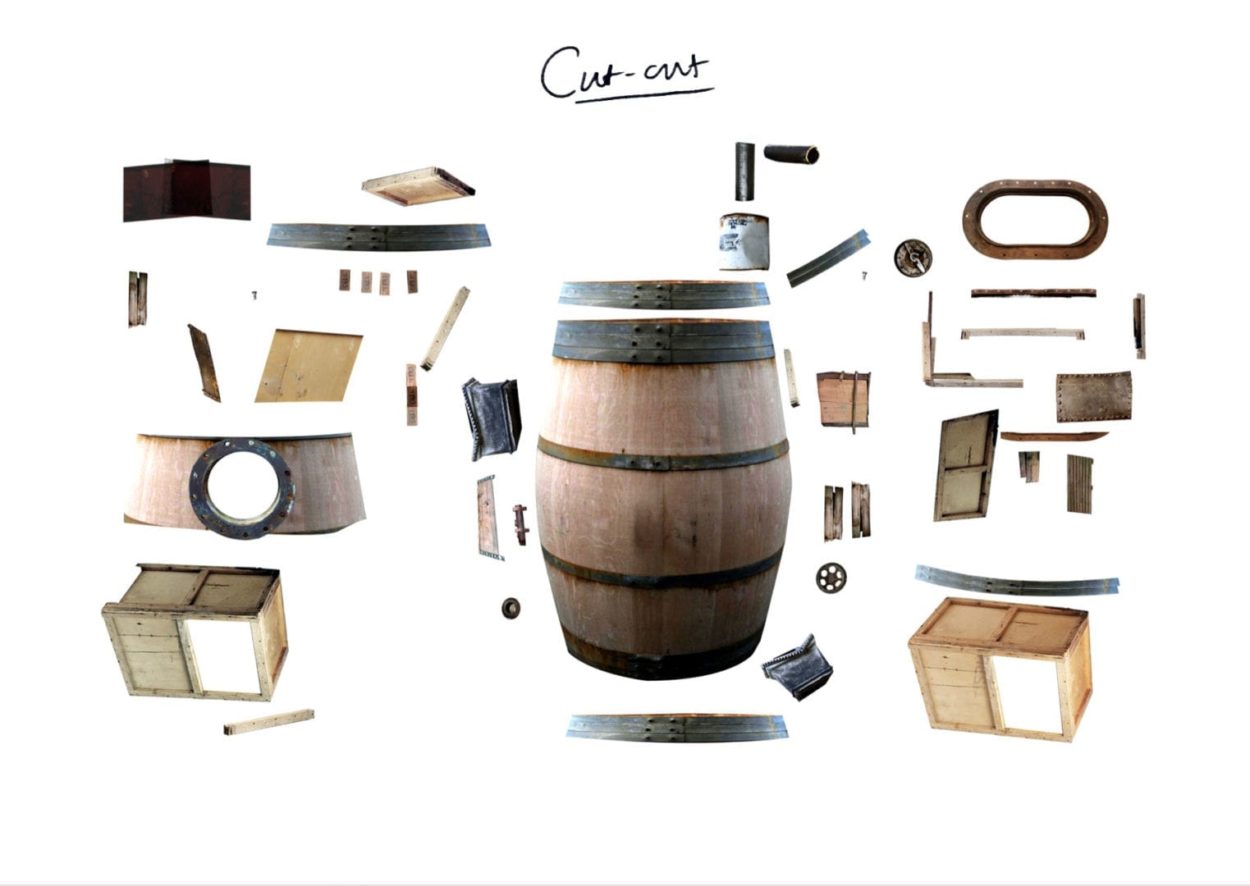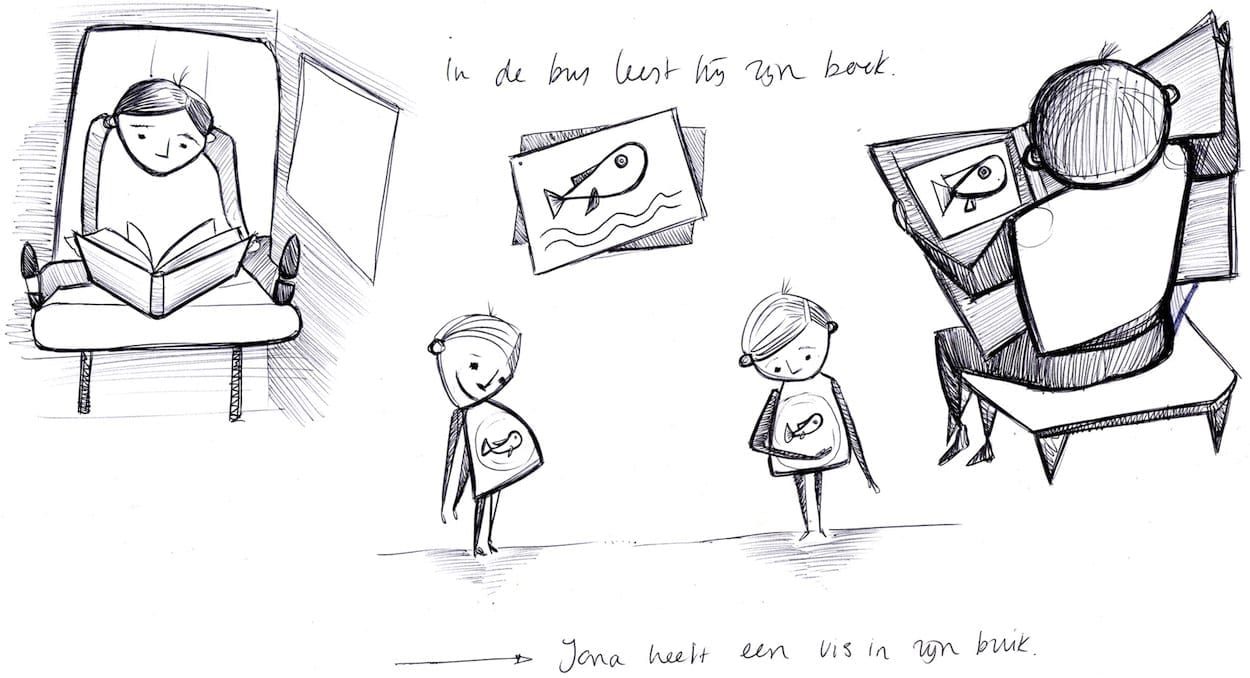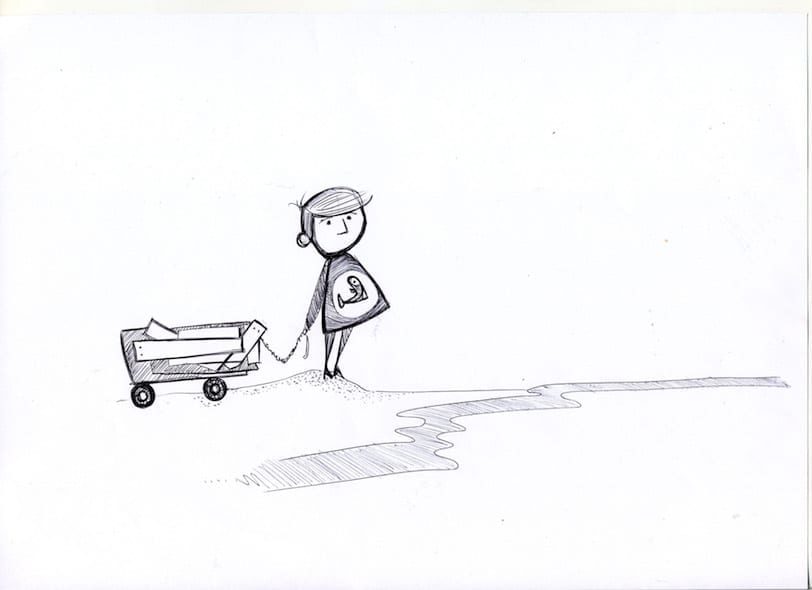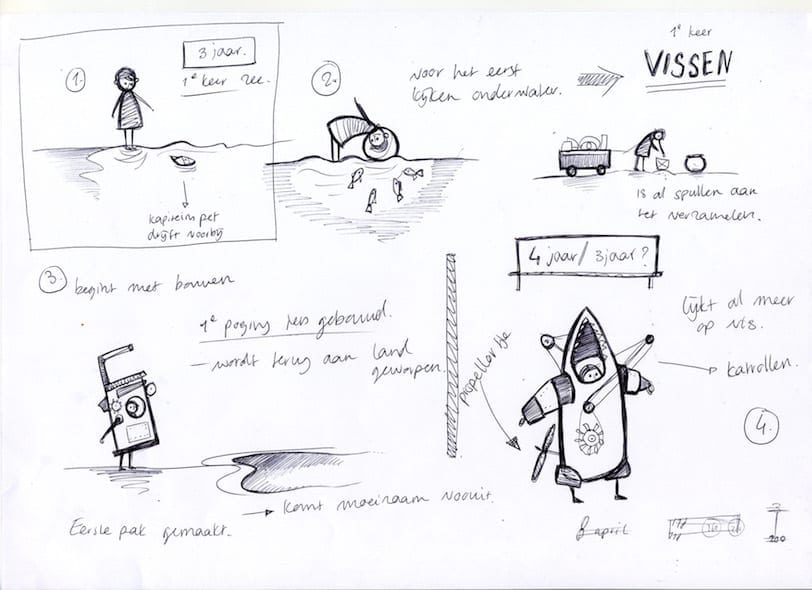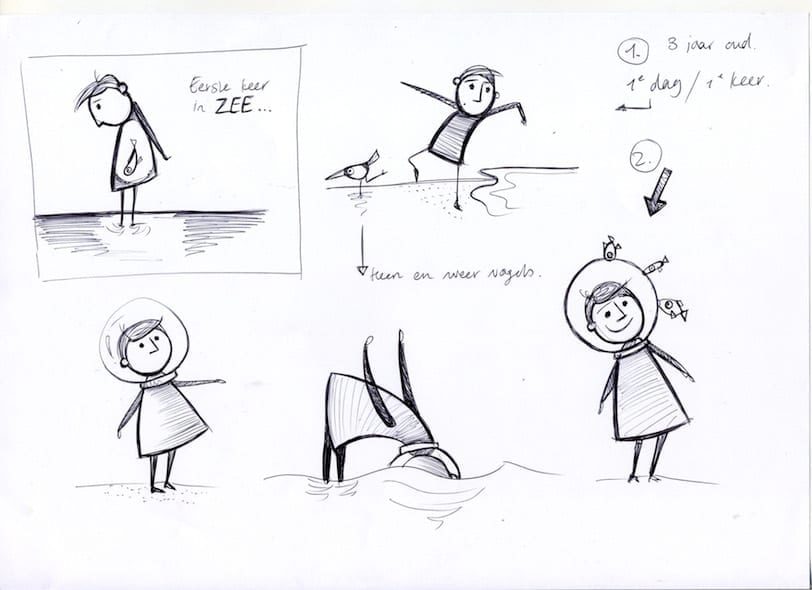‘Jonas and the Sea’ – Marlies van der Wel –
What were the seeds of the story of Jonas’ lifelong longing to be part of the sea – was it reflective of your own desire and love of the sea?
To be honest, I can actually be a bit scared of the sea. Looking at the surface, not knowing how deep it is or what creatures could be hiding down there. I absolutely hate crabs and lobsters – they look like swimming spiders. For me it was more a fascination of what the sea symbolises. Metaphorically, it can perhaps be seen as “the ocean of opportunity”, urging you to think of what you want to do in life, what’s the meaning of it all and so forth. In the film, this translates to the quest of discovering your true desires, even when it’s being a fish.
How did the narrative evolve – was it through a process of sketching images or did you express your thoughts down in words?
The very first thing that came to me was a rough sketch of a little boy with a fishbowl on his head, trying to observe the sea life up close. Then I started thinking about the story this image would communicate; a sea covering a hidden, undiscovered world and a boy who will never be able to go there, because he is human and humans belong ashore. This storyline provoked one sentence that I kept on repeating to myself like a poem; a person belongs on the shore and not in the sea. From there I went on with writing and sketching.
Please tell us your creative process for animating – and how you went about creating the film.
It basically starts with writing and sketching simultaneously. The hard part about writing for animation, is that the storyline is mainly told through images rather than written words. Therefore, I usually do the writing and drawing at the same time. I always start with animating the first scene, even if I don’t know how the film will end. At a certain point it’s almost always a big chaos; the script is not finished, the storyboard is half done, a moving storyboard doesn’t exist (yet), and I’m already designing and animating the film. It certainly involves rather high stress levels (even more to the producers) and it can be scary, but it also keeps everything open, till the very end. In a way, it makes me undergo the same development as my characters, like I’m facing the same challenges they are facing.
With ‘Jonas and the Sea’ this embodiment went a step further. To build Jonas’ world, I went to the Dutch shores to collect and photograph everything that was washed ashore. I had to collect an immense archive of images, from which I made collages to create the world you see in the film. So…. it was exactly like Jonas, who makes bigger and bigger creations as time goes by and more and more objects wash ashore.
The designs are built in Photoshop and the next step from there is to paint and draw on it. That happens on paper and digitally. The waves in the film are drawn frame for frame, painted on paper. That way I create all the shots, from where I go on to animate it in After Effects.
Was there a lot of research involved – and if so where, and what did you learn from it?
The biggest research I did was on how to craft a short, well-rounded story that would catch the interest of the audience straight away. I listened to talks of writers from Pixar and went on a writing course to develop that side a bit more. Also, I had a coach, Paul Driessen, a legendary animator, who tutored me through the process of making a short animation film. His biggest tip was ‘keep it small and relatable to yourself. You’re going to spend a lot of time with it, it needs to be fun’.
Did you work on Jonas and the Sea by yourself?
Most of the time I did. During the last year of the process I had an assistant helping me for a couple of weeks on a limited selection of shots. But by all means… I didn’t do the whole thing by myself. I had much help from surroundings, such as the production company (HALAL). My biggest support was perhaps my line producer, Marieke Konijn. She took a lot of responsibility from me and was the biggest shoulder to cry on – or laugh with – she became a good friend. The film process can be very lonely at times. I like the solitude, and love to work during the dark, quiet hours completely creating my own worlds. But it’s not always good, when it isolates you too much from the outside (real) world.
What were the main challenges of the production?
The main challenge was to stay positive, have faith and perseverance. There was a point where I looked back at the one busy year that had already passed. The result? Half of the scenes. That day I made a day to day planning and realized I had to spend another year going on like I had. It’s unavoidable that you lose sight of the bigger picture at a certain point, and I began to really hate everything that came out of my hands. It really took a lot not to give up.
Eleven minutes is quite long, did it take forever to make?
Yes it did!! I have friends that fell in love, started relationships and produced walking children during the time I made òne animated short.
Please give us a brief background to what inspired you and led you to becoming an animator?
My grandpa was an artist in Canada. He lived in the woods and sold his paintings along the road. He is the inspiration for me to live my life as I live it. Children books were the first art form that inspired me. I love the way they tell simple stories, visuals with a lot of meaning and very few words. That is basically what I try to do in my animated shorts too.
I always wanted to go to art school, I can’t even remember a time this wasn’t my goal. Entering the school at the age of 16, I was the youngest there. At 21 I was already finished and went on working for a year at a publicity agency where I learned to work with discipline and routine. After that year, at 22, I knew that the only thing I wanted to do was to work on my own projects. So I became my own boss, working in the style and way that I wanted.
Was your childhood particularly creative?
It was. My dad went to graphic art school and my mother was always writing. There were always pencils and papers around and I was constantly drawing. As toddlers, when we had to dress up for school parties, I appeared as ‘an artist’. So, between all the pirates, princesses and bumblebees I was there with a blue overall, palette and brushes.
I sometimes think back on my childhood and the dreams I had, it makes me think; ‘I really dìd become an artist, I make things, I can do what I want, I’m so happy!’. Other days I’m worried about not having a retirement or stable ways to pay the rent, or I get insecure and almost can’t look at or engage with my own work. Most of the time I’m really happy though 🙂
Where’s your favourite place for working and why?
My desk in the corner of my house. I live by myself in a small Amsterdam apartment. That’s definitely the place where I work during the calm, quiet hours; late at night or early in the morning. The hours that are there just before the normal day starts. During the day, I’m working at my studio. This separation of work and home gives a good change of being by myself and acting like I have a job to go to.
Do you work in a systematic way and discipline yourself to work in a routine daily?
I force myself to work normal workday hours, starting at 10am and finishing at 7 pm. After work, I go to the gym to compensate for computer life and stay mentally motivated. I give myself holidays and love the end of the week beers on Fridays.
Is there anything else you’d like to share?
There were times I found it frustrating how people want to put animation in a children’s corner. It is so much more than that. It’s an endless art form and most of all – a craft in its own right. My film ‘Jonas and the Sea’ was programmed at a lot at festivals, for the children’s program. At first I felt a need to defend the film; it’s not only for children! Now, after a lot of screenings with children, I see the beauty of it. A cinema full of kids is the best audience you can wish for. They wonder and amaze, sigh or cry, or just look away when they find it boring. It makes them the most sincere audience there is.
It’s my dream to once make that one simple perfect little story, one that reaches people all over the world, from all nationalities or ages. A story that can mean something for people, really do something, or maybe just to be cherished.
Last week I got an email from a Chinese dad writing; ‘I am a father from China, my son loves your story of Jonas. He recites it and plays it in Chinese. He has the same dream as Jonas, and now, wants to live in the Sea’. That was the biggest satisfaction after all the hard work.
LINK:
